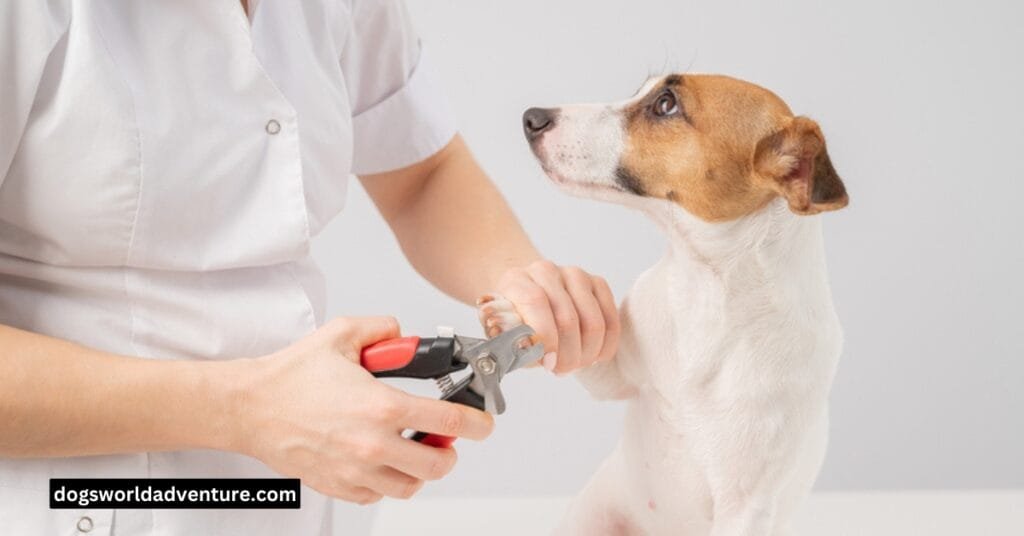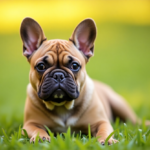Trimming your dog’s nails is an important part of keeping them healthy and comfortable. When a dog’s nails get too long, it can hurt them and make it hard for them to walk or play. Long nails can even get caught on things, causing painful injuries. But for many dog owners, nail trimming feels tricky, and some are even afraid of hurting their pet. The good news? With a few easy steps, the right tools, and some patience, you can safely trim your dog’s nails at home.
In this guide, we’ll go over everything you need to know about trimming your dog’s nails safely. You’ll learn how to tell when their nails need a trim, what tools to use, and how to find the “quick,” which is the part of the nail with nerves and blood vessels. We’ll cover step-by-step instructions for trimming, common problems you might face, and tips for making your dog feel calm during the process. By the end, you’ll feel ready to keep your dog’s paws in top shape, making them happier and healthier.
Why Dog Nail Care Is Important
Healthy Nails, Happy Paws
Your dog’s nails naturally grow over time. If left untrimmed, they can become too long, which can lead to discomfort, pain, and even injury. Nails that are too long can make it hard for your dog to walk or play and might even change their posture. Keeping their nails trimmed helps them walk properly and stay pain-free.
Preventing Infections and Injuries
When a dog’s nails get too long, they’re more likely to get snagged on carpets, furniture, or even outside surfaces like grass or dirt. This can lead to broken nails, bleeding, and even infections. Regular nail trimming reduces the risk of these injuries and keeps their paws healthier.
Behavior and Safety
Dogs with long nails may unintentionally scratch furniture, floors, and even family members. This is especially true for playful pups who don’t know their own strength. Regular trims help keep everyone safer around your dog and reduce the chances of accidental scratches.
Signs Your Dog’s Nails Need Trimming
Clicking Sound on the Floor
A common sign that your dog’s nails are too long is hearing them click on hard surfaces like tile, wood, or linoleum. When you hear that distinct “click, click, click,” it’s a good indication that it’s time for a trim.
Curved or Twisting Nails
When nails grow too long, they can start to curl, twist, or bend. Curled nails can cause discomfort and even grow into the dog’s paw pads, which is painful and requires a vet’s help to fix.
Difficulty Walking or Changes in Posture
If your dog starts walking differently or seems uncomfortable, it could be due to long nails. Dogs with long nails may shift their weight to avoid putting pressure on painful paws, leading to posture changes and stress on their joints over time.
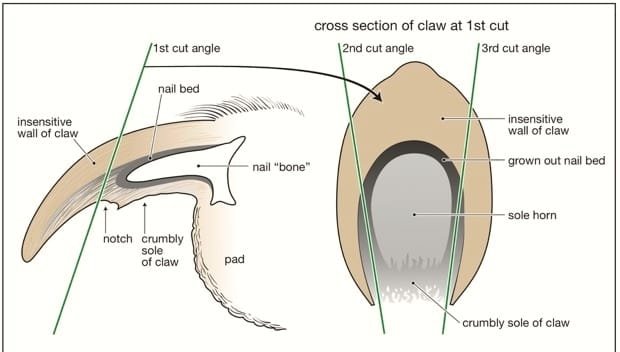
Getting Ready to Trim: Tools You’ll Need
Having the right tools makes nail trimming easier and safer for both you and your dog. Here are the essentials:
1. Dog Nail Clippers
There are two main types of dog nail clippers:
- Scissor Clippers: These work like scissors and are great for larger dogs with thicker nails.
- Guillotine Clippers: These clippers have a hole where you place the nail, and when you squeeze the handle, it trims the nail. This type works well for small to medium dogs.
2. Nail Grinder (Optional)
A nail grinder, often called a Dremel tool, is an electric file that slowly sands down the nail. Many dog owners prefer grinders because they allow for gradual trimming and leave the nails smoother than clippers. However, grinders can be noisy, which might make some dogs nervous.
3. Styptic Powder or Pencil
Styptic powder or a styptic pencil helps stop bleeding in case you accidentally cut the quick, which is the part of the nail with blood vessels. This is an essential item, especially for beginners. You can buy styptic powder at most pet stores or use cornstarch in a pinch.
4. A Comfortable Mat or Towel
Trimming on a non-slip mat or towel can help your dog feel comfortable and secure. The mat or towel also catches any nail dust, keeping the area cleaner.
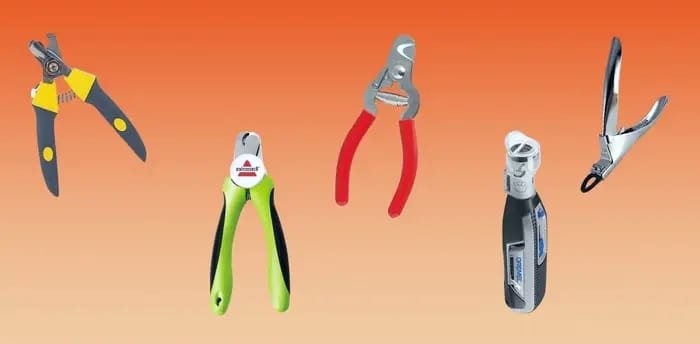
Step-By-Step Guide to Trimming Your Dog’s Nails
Following these steps can help you trim your dog’s nails confidently and safely.
Set Up in a Calm, Well-Lit Area
- Choose a quiet room with bright lighting. This helps you see the nails clearly, especially if your dog has dark nails.
- Make sure your dog is calm and comfortable before starting. You can play with them or give them a treat beforehand to make them feel relaxed.
Hold Their Paw Steadily
- Gently hold one of their paws and press slightly on the pad to extend their nails. Avoid squeezing too tightly, as this might make them uncomfortable.
- Take your time and speak to your dog in a soothing voice to keep them relaxed.
Find the Quick
The “quick” is the pink part inside the nail that contains nerves and blood vessels. Cutting it can be painful and cause bleeding. In light-colored nails, the quick is usually easy to spot, but it can be harder to see in dark nails.
Trim Small Sections
- Only trim a small part of the nail at a time, especially if you’re new to trimming. Start by cutting the tip of the nail and stop if you see a dark spot in the middle – this usually means you’re getting close to the quick.
- Remember, you can always trim more later if needed. It’s better to take small amounts than to accidentally cut too deep.
File or Grind (Optional)
- If you have a nail grinder, use it after trimming to smooth out rough edges. This reduces the chances of the nail snagging on things and makes the nails less sharp.
- Be sure to move the grinder in short bursts, as keeping it on the nail too long can make it hot and uncomfortable for your dog.
Reward Your Dog
- Give your dog a treat, praise, or a belly rub after each paw. Positive reinforcement helps them feel good about nail trimming and makes future trims easier.
Common Challenges and How to Handle Them
Nervous Dogs
Some dogs are naturally anxious about nail trimming. To help ease their nerves:
- Try using a treat-dispensing toy to distract them.
- Get them used to having their paws touched without trimming right away.
- Trim only one or two nails at a time, gradually building up to a full trim.
Dogs with Dark Nails
Dark nails can make it hard to see the quick. If your dog has dark nails:
- Trim very small amounts each time.
- Use a nail grinder instead of clippers, as it’s easier to avoid the quick.
- Shine a small flashlight under the nail to try and see the quick.
Squirmy Dogs
Some dogs don’t like sitting still, which can make trimming hard. Here are some tips:
- Have someone gently hold your dog or keep them distracted with treats.
- Trim a few nails at a time, taking breaks if needed.
- Use calming sprays or collars if your dog is particularly wiggly.
When to Consider Professional Help
If you’re not comfortable trimming your dog’s nails or if they have a strong fear of clippers, a professional groomer or veterinarian can help. Professionals have experience with all types of dogs and tools, making the process faster and less stressful for anxious dogs.
How Often Should You Trim Your Dog’s Nails?
Dogs’ nails grow at different rates depending on factors like age, breed, and activity level. For most dogs, trimming every 3-4 weeks works well. Some dogs might need more frequent trims, while others can go a bit longer between trims.
Trimming Tips for Puppies
Introducing nail trimming to puppies early on is a great way to get them used to the process. When they’re young:
- Use gentle touches on their paws to get them comfortable with handling.
- Trim only a tiny bit each time and reward them with treats.
- Be patient and make the experience positive.
Starting nail care young helps puppies grow up unafraid of nail trims, making it easier for both of you in the long run.
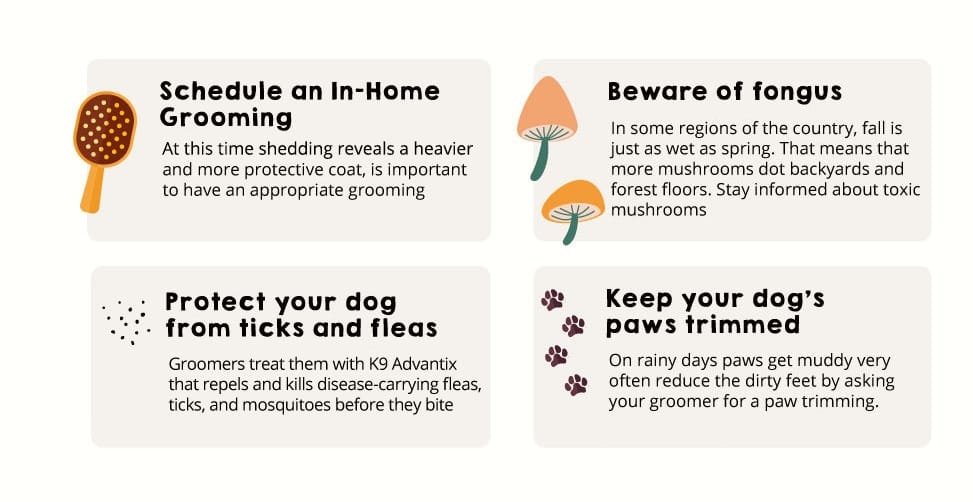
Avoiding Common Nail Trimming Mistakes
Here are a few mistakes to avoid when trimming your dog’s nails:
- Cutting Too Much at Once: It’s easy to accidentally cut too deep if you trim large sections. Always take off small pieces at a time.
- Forcing an Upset Dog: If your dog seems very stressed, it’s better to stop and try again later. Forcing them can create bad memories, making trims harder in the future.
- Skipping Routine Trims: Regular trims keep the nails and quicks shorter. Skipping trims can make the quick grow longer, making it harder to keep nails at a safe length.
- Using Dull Tools: Dull clippers make it hard to get a clean cut, which can split or hurt the nail. Check your tools regularly and replace or sharpen as needed.
Conclusion
Trimming your dog’s nails doesn’t have to be stressful. With the right tools, patience, and practice, you can safely trim your dog’s nails at home. Take it slow, give plenty of treats, and remember that nail trimming is just part of keeping your dog happy and healthy. Keeping their nails short helps them walk comfortably, reduces the risk of injury, and strengthens the bond between you and your dog.
Read also: Puppy vaccination guide: Protecting Your Dog’s Health Day One
FAQs
1. How can I tell if my dog’s nails are too long?
If you hear clicking sounds on hard floors, see nails that curve, or notice changes in your dog’s walking, their nails may be too long.
2. How often should I trim my dog’s nails?
For most dogs, trimming every 3-4 weeks is ideal. Dogs that spend more time outdoors on rough surfaces may need trims less often, while indoor dogs may need more frequent trims.
3. What happens if I cut the quick?
If you accidentally cut the quick, your dog’s nail will bleed and may hurt. Apply styptic powder, cornstarch, or a styptic pencil to stop the bleeding. It’s okay—it happens, especially when you’re learning!
4. Should I use clippers or a grinder?
This depends on your dog’s preference and nail thickness. Clippers work well for most dogs, but a grinder allows for more gradual trimming, especially for thick nails or dogs with dark nails.
5. How can I help my dog stay calm during nail trims?
Use treats, a soothing voice, and positive reinforcement to create a calm environment. Take breaks, trim just a few nails at a time, and praise them after each paw.
6. What if my dog hates nail trims?
Start with short sessions, gradually getting them used to having their paws touched. Try using a treat-dispensing toy or a calming collar, or consider professional help if they’re too stressed.
7. Can I trim my puppy’s nails?
Yes, it’s great to start early! Gently handle their paws and trim tiny bits to get them used to nail care. Remember to reward them after each paw.
8. Is it bad to trim my dog’s nails too short?
Yes, trimming too short can cut the quick, causing pain and bleeding. To avoid this, trim small sections and watch for a dark spot inside the nail that indicates the quick.
9. What should I do if my dog’s nails are curling?
If your dog’s nails are curling, it’s important to trim them carefully and regularly to prevent pain and infection. You may need a professional groomer’s help to get them back to a comfortable length.
10. Can I use human nail clippers on my dog?
Human nail clippers can work for small puppies or very tiny nails but aren’t ideal for most dogs. Dog-specific clippers or a grinder are safer and more effective tools for trimming.

